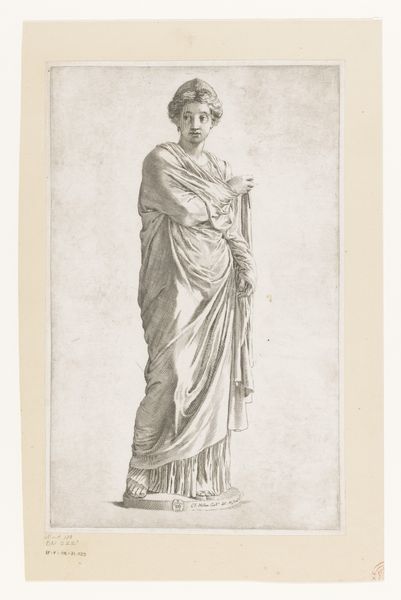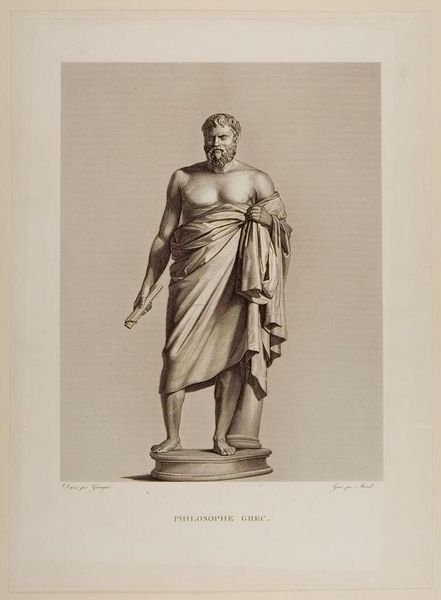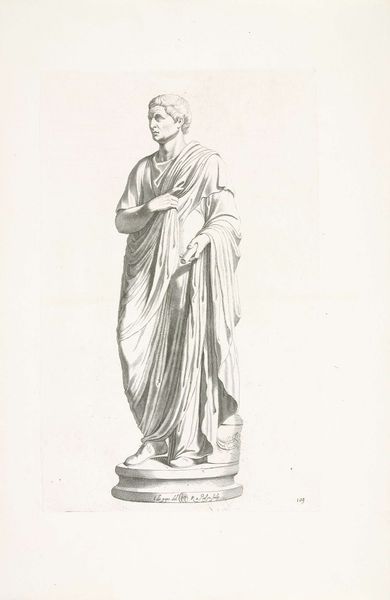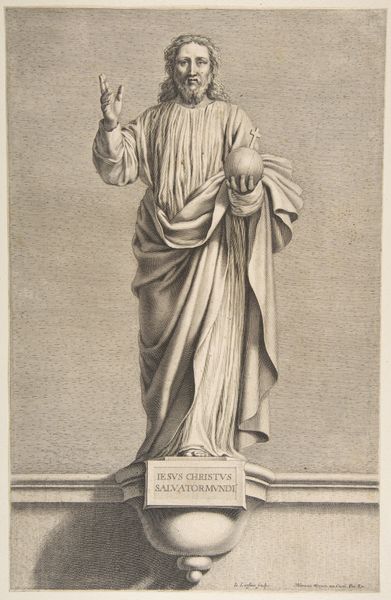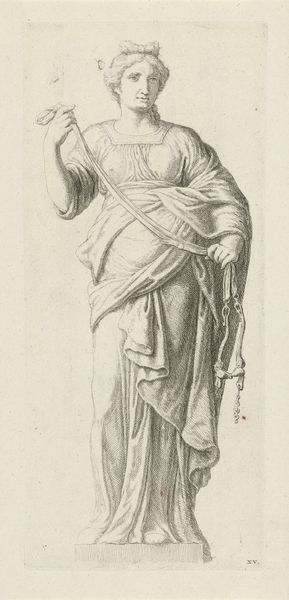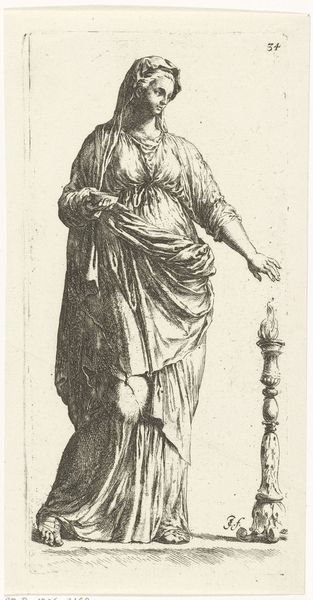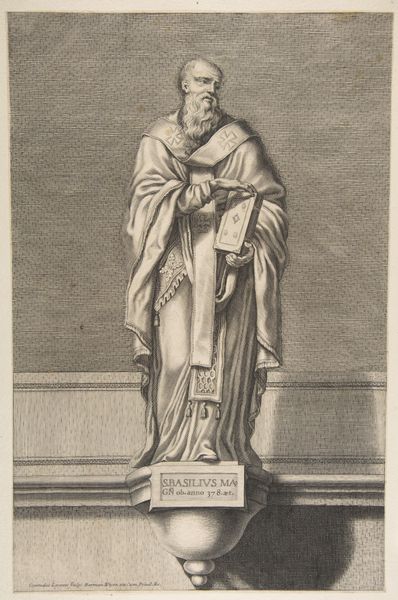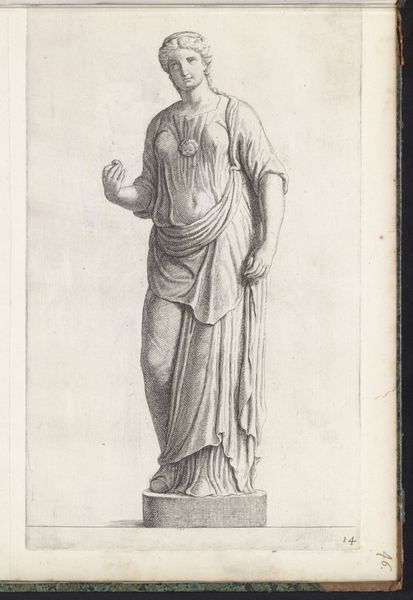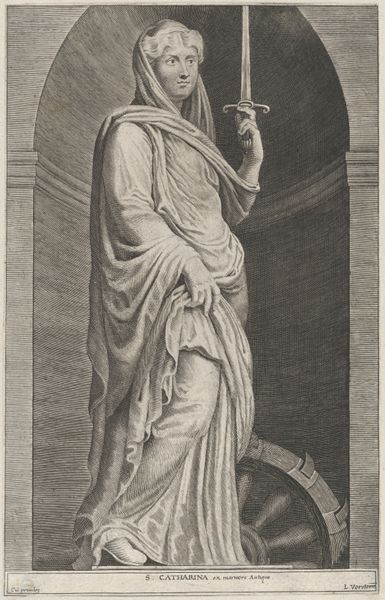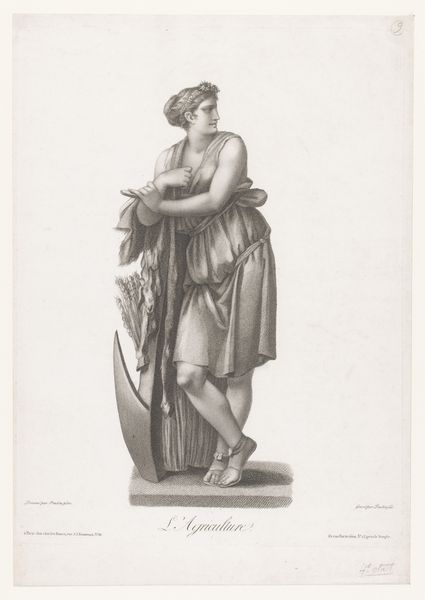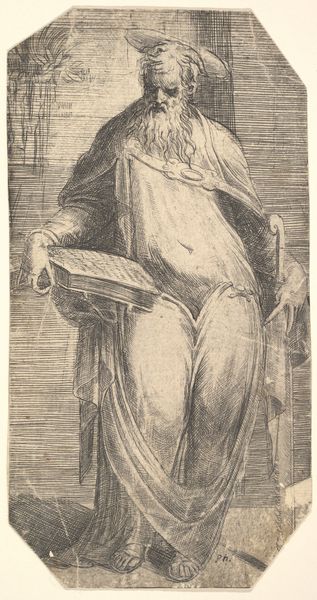
print, etching, engraving
#
portrait
#
neoclacissism
# print
#
etching
#
classicism
#
history-painting
#
academic-art
#
engraving
Dimensions: 20 x 12 3/4 in. (50.8 x 32.39 cm) (image)
Copyright: Public Domain
Curator: This is a portrait of Giovanni Battista Piranesi, rendered in 1790 by his son, Francesco Piranesi, now in the collection of the Minneapolis Institute of Art. It’s an etching and engraving. Editor: It strikes me as a bit theatrical. The pose, the drapery, the intensity of the gaze – it's all very dramatic, even in the relatively simple medium of printmaking. Curator: Absolutely. Francesco chose to depict his father posthumously, as a statue. He leans thoughtfully on a sculpted head, likely symbolic of the art of antiquity which Piranesi the elder was obsessed with. It echoes classical statuary, which fits within the Neoclassical art movement happening in that period. Editor: Right, but it's also an act of preservation. Putting Piranesi in dialogue with the ancients, attempting to cement his legacy within this grand narrative of Western art. Was there any anxiety over the role of artists and their position at the time, in late eighteenth-century Europe? Curator: In the 1790s, Neoclassicism served as the visual language of revolution, from the United States to France. With democratic movements valorizing the virtues of republican Rome and Greece, the younger Piranesi surely associated his father with the era's ethos of public service. Editor: Yet there's a kind of stillness here, despite that visual vocabulary. What do you make of that disconnect? I mean, revolution and the veneration of great historical thinkers don’t necessarily occupy the same cultural or psychic space, right? It suggests a specific negotiation with time, perhaps with an awareness of historical disruption. Curator: It certainly conveys an attempt to create something enduring through the visual style of that time. And the contemplative pose—finger to the face—is so intentional, and it’s very revealing. The furrowed brow hints at inner complexity, not just mastery of skill, and I find that extremely compelling. Editor: Yes, the theatrical gesture is not just for show. The overall composition reflects the dynamism but also tension of Neoclassical values as they transition toward newer ideologies. So much more than just a portrait. Curator: Exactly, this work makes a powerful statement about Piranesi, his time, and his family legacy. Editor: Definitely something to continue thinking about. Thank you for highlighting it.
Comments
No comments
Be the first to comment and join the conversation on the ultimate creative platform.


